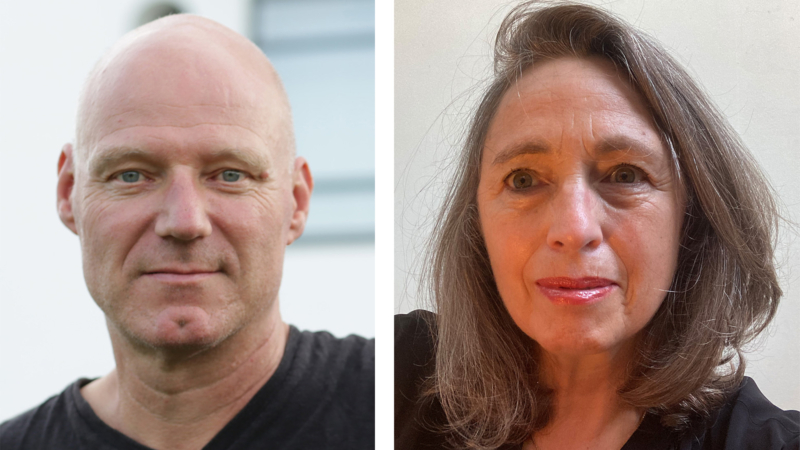“Intimacy Data Symphony” is a poetic ritual for kissing and caressing each other’s faces in public, a multi-sensory, intimate experience of merging realities. The brain activity of two people kissing and caressing is measured and visualised on an E.E.G. (electroencephalogram), with real-time data projected onto the floor and revolving around the couple. The kissing pair’s brain activity data is interwoven in the data visualisation. The brain activity of all the participants, mirroring each other’s emotional expressions and movements in interpersonal and aesthetic ways, co-create an immersive visual, reflexive datascape. This data visualisation is translated in real-time into an algorithm that composes a soundscape – a Kissing Data Symphony.
This performance installation premieres a full Multi-Brain BCI (brain computer interface). While previous BCI only measured individual brain activity, new Multi-Brain BCIs enable the measurement of shared corporeal experience, collective experience, and group emotions, for collecting large scale data and feeding algorithms. This research serves AI purposes of predictability, automation, direction, and control. Artists Lancel/Maat respond critically with an aesthetic Multi-Brain BCI design exploring public dialogue and imagination, vital to experience intimacy, empathy, and trust.
The Multi-Brain Computer Interface Intimacy Data Symphony “embraces all participants in a kiss”, in the sense that:
* All people present – those kissing and caressing, as well as the spectators– co-create and interpret in real-time the emerging Multi-Brain BCI data visualisation and data sonification of a shared, spontaneous brain activity.
* The aesthetic principles disrupt relations of control and predictability. Instead, they enable ambiguous perception and shared reflection, through unfamiliar exposure to intimacy and vulnerability. They also enable shared responsibility and care, and data unpredictability.
* A facilitator guides participants and invites them to feel, explore, interpret, and find meaning in this hybrid intimate social touch process.
Performance & installation
Tijs Ham STEIM Amsterdam (Soundscape Algorithm) / MondriaanFund (NL) / Baltan Laboratories & Holst Center Eindhoven / Fourtress.nl Eindhoven / TASML artist in residency Tsinghua University Beijing / University of Technology Delft – Participatory Systems Initiative (NL) / Digital Synesthesia Research Group, University Vienna / Hack the Brain Waag Society / Creative Industries Fund / HeK House of Electronic Arts Basel / European Media Art Platform EMAP/EMARE and RIXC, Riga / Eagle Science Amsterdam
Performance times, in the presence of the artists:
Fri 24.02.23 >17:30-19:00
Fri 24.02.23 >19:30-20:30
Sat 25.02.23 >18:00-19:30
Sun 26.02.23 >11:30-13:00
Sun 26.02.23 >14:30-16:00
Lancel/Maat
Artists and researchers Karen Lancel and Hermen Maat (Lancel/Maat), based in Amsterdam, work in the fields of art, science, and technology. They create interactive media art, performance, video, and installations; and mediated social touch rituals. Their work has been presented internationally in different cultural and geographical contexts (in Europe, Asia, and the USA) and has been awarded several grants, artist residencies, research positions, fellowships, and prizes. Lancel/Maat’s work is represented by Public Art Lab Berlin.
Lancel and Maat are considered pioneers exploring embodiment, empathy and intimacy, isolation, privacy and trust, in posthuman bio(techno)logical entanglement with (non-)human others. They critically reflect on current politically and commercially framed data representations and interpretations of our embodied experience and intimate connections. In their works, automated biometric control technologies are radically deconstructed to create poetic biotechnological feedback systems and mirror-neural perception, for a new experience and imagination of shared embodiment.
Lancel and Maat are currently developing a new multi-sensory interaction model for intimate social touch experience, Shared Senses. This interaction model is developed to inspire artists, scientists and designers, and people in the educational field to rethink a sustainable socio-technological eco-culture of merging realities. It emerges from a collaboration with ArsElectronica and European Media Art Platform (EMAP), as well as from Lancel/Maat’s artistic research and PhD at the TU Delft (Participatory Systems Lab).

